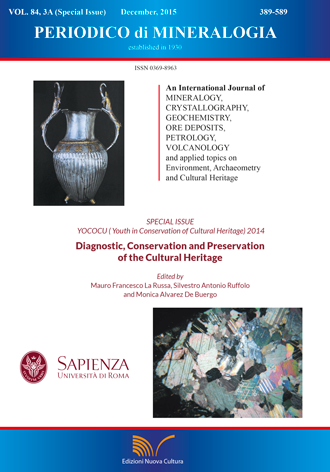Archaeometric approach for the study of mortars from the underwater archaeological site of Baia (Naples) Italy: Preliminary results
DOI:
https://doi.org/10.2451/2015PM0031Keywords:
Mortars, SEM-EDS, underwater archaeological site, cocciopestoAbstract
This work was aimed to evaluate the features of mortar samples taken from the underwater archaeological area of Baia, (Naples, Italy), an important site, where the remains of the ancient Roman city of Baiae and Portus Iulius are submerged after bradyseism events, started from IVth century A.D. Several architectural structures are still preserved into the submerged environment, such as: luxurious maritime villas, imperial buildings, private houses, thermae, tabernae and warehouses. In particular, some samples were collected from the masonry walls belonging to a building of the underwater area called Villa a Protiro. A first archaeometric approach has been applied to analyse twelve archaeological mortars samples in order to define: textural features, chemical composition and raw materials used for their production. For this purpose different analytical methods were used, such as, polarizing optical microscope (POM) and scanning electron microscopy (SEM-EDS).


